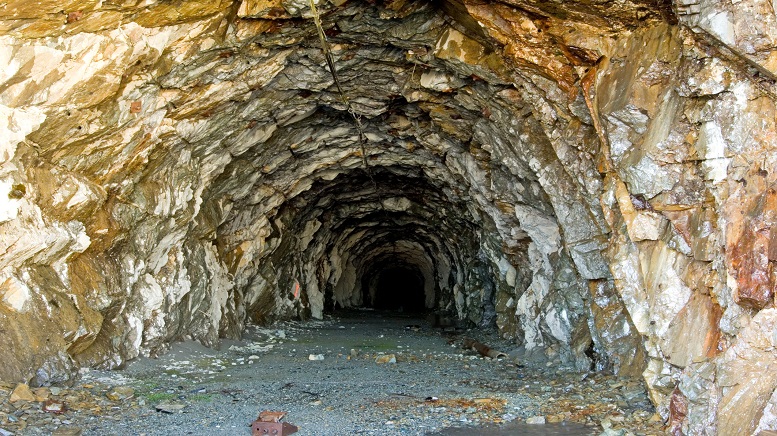Gold Fields Ltd. (NYSE:GFI) stock collapsed after agreeing to buy Canada’s Yamana Gold Inc. (TSX:YRI) in an all-stock deal that will make the South African miner the world’s No. 4 gold producer. Gold Fields shares fell more than 20% following the news, while Yamana shares soared by 5%.
Transaction Creates a Top-4 Global Gold Major Company
The $6.7 billion agreement done by Gold Fields to buy Yamana Gold allows it to gain a foothold in the American continent.
Under the terms of the agreement, Yamana shareholders will receive 0.6 shares of Gold Field for each outstanding Yamana share, representing a 33.8% premium to the 10-day volume-weighted average trading price of Yamana shares of $5.20 on Friday, May 27, 2022.
The combined company will have a market capitalization of $15.9 billion. Gold Fields shareholders will own approximately 61% of the miner’s shares, while Yamana holders will own the remaining 39%.
The transaction is the largest mining deal in the Europe, Middle East and Africa (EMEA) region in over a decade. It is also the third-largest South African deal since 2014 – all in a sector that analysts say needs consolidation to reduce costs.
The transaction will make Gold Fields one of the four largest gold mining companies globally. The acquisition of Yamana by Gold Fields significantly enhances the ability of the combined company to achieve the three strategic pillars of Gold Fields: maximizing asset potential; advancing ESG engagement; and increasing the value and quality of its asset portfolio.
Gold Fields Chief Executive Officer Chris Griffith said:
“Yamana’s high-quality asset base in the Americas and strong development and exploration pipeline will further diversify the geography of our portfolio, creating a top-4 global gold major, well positioned to deliver long-term value creation.”
Peter Marrone, Executive Chairman of Yamana Gold said:
“The combination of Yamana and Gold Fields creates a world-class, globally diversified company with regional relevance across premier, rules-based mining jurisdictions that is underpinned by low cost, long life mines. The combined entity will be well positioned to deliver long-term value creation with its enhanced scale, management strength and improved capital markets profile. Yamana and Gold Fields also have complementary corporate cultures and values with an ESG-first operating model with a strong focus on supporting host communities and environmental stewardship.”
The companies are targeting synergies of approximately $40 million per year from the deal, which is expected to close in the second half of 2022.
“It’s a good deal,” said Rene Hochreiter, an analyst at Noah Capital Markets in Johannesburg, “It adds a lot of value to Gold Fields and I wouldn’t look at what the share price does today.”
Griffith also said Gold Fields is looking for assets that can complement its growth strategy and provide operational synergies.
Yamana produced 884,793 ounces of gold and 9.2 million ounces of silver in 2021. The miner owns 50% of Malartic, the largest open-pit gold mine in operation in Canada. The Toronto-based miner’s portfolio of assets also includes the development-stage Wasamac project in Quebec, the Cerro Moro gold-silver operation in Argentina, the Jacobina gold mine in Brazil, and two early-stage projects in Chile.
“That’s what the Yamana assets do, they tick all those boxes for us. They bring high quality assets in Canada, Chile and Brazil, with great pipeline projects in both Canada and Argentina in particular,” Griffith said in a presentation.
Gold Fields currently also operates the Cerro Corona mine in Peru and is developing the Salares Norte project in Chile. The company says those mines are expected to start production in the first quarter of 2023.
Gold Fields and Yamana Gold Have Approved the Deal
Gold Fields said the boards of both companies unanimously approved the deal and recommended that its shareholders vote in favor of the offer. Griffith expects the shareholder vote to take place by the end of September this year.
Yamana’s shares will be delisted from stock exchanges, while Gold Fields will continue to list in Johannesburg, where the combined group will be headquartered.
Year-to-date, Yamana Gold stock is up more than 36%, while Gold Fields shares are down 11%.
Nonetheless, Gold Fields CEO Griffiths said the Yamana acquisition was compelling.
Yamana has “great assets in great jurisdictions, with growing production and a great project pipeline, which is something Gold Fields didn’t have,” Griffith said in an interview. “This is an incredible acquisition with immense potential.”
Founded by Cecil Rhodes in 1887, Johannesburg-based Gold Fields is one of the oldest gold mining companies in the world. Over the past decade, it has diversified outside of its main mining jurisdiction, South Africa, amid a difficult political climate and as the country’s deep mines have become increasingly expensive. Goldfield’s portfolio now includes mines in South America, Australia, and West Africa. It has one remaining mine in South Africa, where producers are grappling with power cuts, soaring costs and the geological challenges of mining the world’s deepest deposits.
Gold Fields CEO said production could reach 3.8 million ounces by 2024 with the opening of the company’s Salares Norte mine in Chile, which could make Gold Fields the third-largest producer in the world. There is the possibility of increasing production to 4.8 million ounces within a decade, Griffiths said.
A High Premium
The premium paid for Yamana is higher than many transactions in the recent past. Investors have generally preferred low- or no-premium deals, such as the zero-premium acquisition by Barrick Gold Corp.
The Canadian gold sector has seen good consolidation over the past year. Last year, Australia’s Newcrest Mining Ltd. bought Vancouver-based Pretium Resources, Agnico Eagle Mines Ltd. acquired Kirkland Lake Gold Ltd. and Kinross Gold Corp. acquired Great Bear Resources Ltd.
Featured Image: Megapixl ©Tashka









